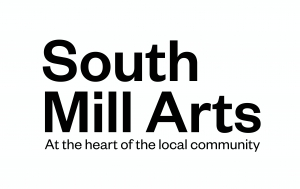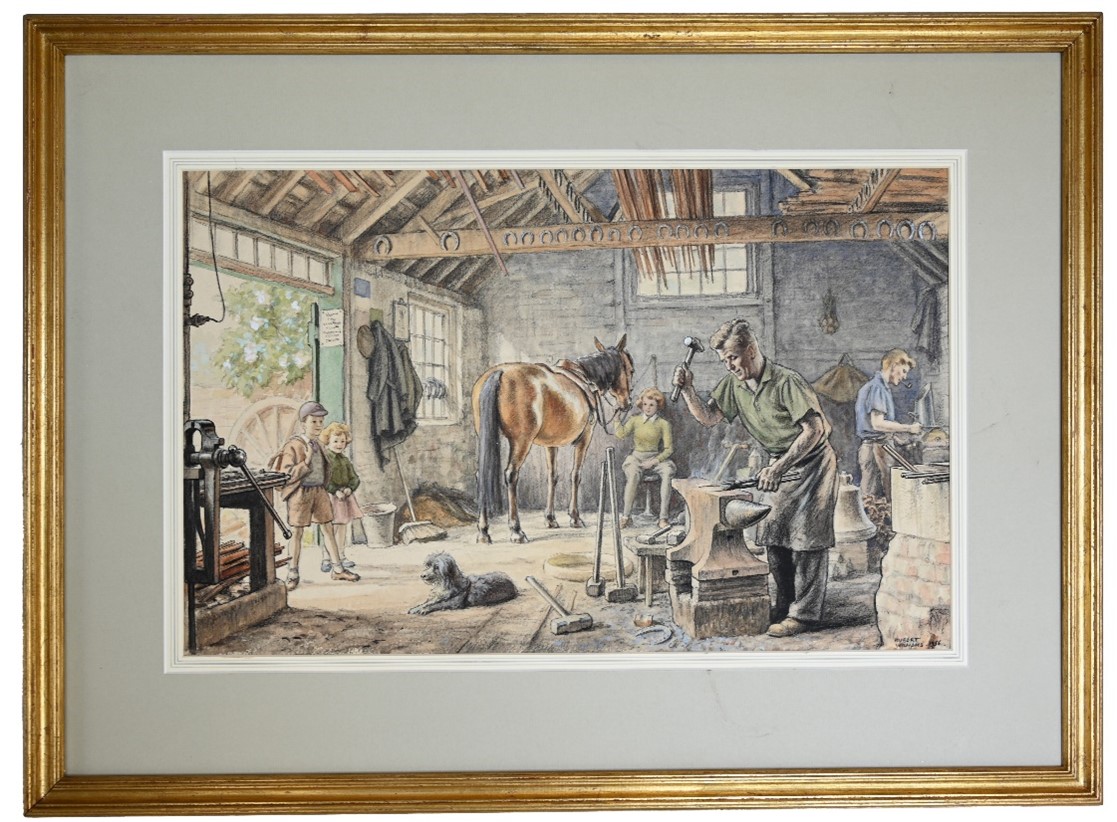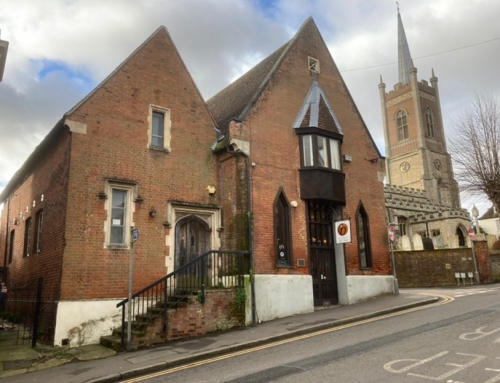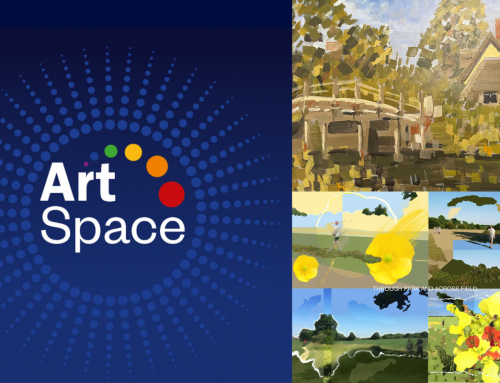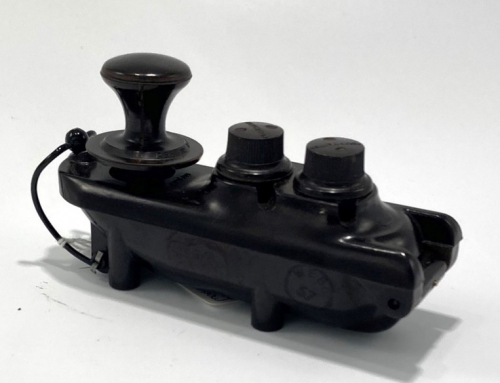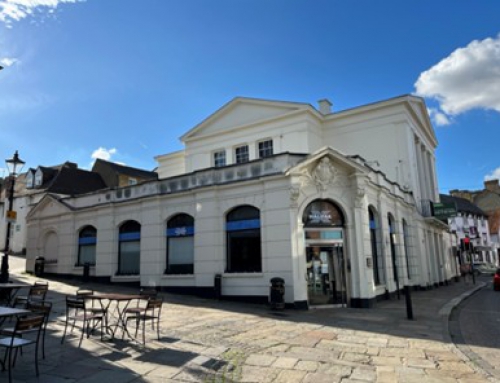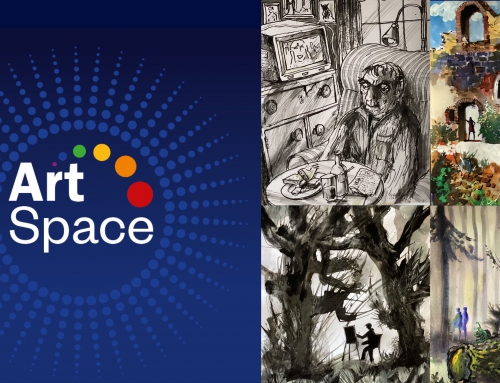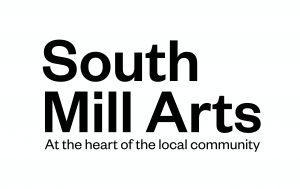Hubert Williams’s Painting of Rayment’s Forge.
This painting from1956 depicts the forge’s interior with Arthur C. Rayment’s sons, Arthur and Sidney. Rayment’s forge stood on the corner of Chantry Road and Hadham road from the early 1860s until 2004 when it was demolished to create room for new flats (now Watsons Yard).
The smithy was probably first started by veterinary surgeons Thomas and Harriet Folks. When Thomas Folks died in 1861, Stephen Eaten took over the shoeing side.
James Privett took over after Eaten moved away in April 1869. Privett came from a poor agricultural community in West Sussex and trained as a blacksmith under his uncle.
Rayment, who was an employee of Privett, lived in Rye Street with his young family and took over the smithy in 1881. In 1904, Privett died, and the smithy was sold to Sir Walter Gilbey for £530 (£45,000 today). Gilbey’s estate was later auctioned, and the forge was bought by its then tenant, Arthur C. Rayment for £260 in 1917.
Rayment, his son Arthur C. and then his grandsons Arthur and Sidney, worked the smithy until it closed when Arthur and Sidney retired in the early 1970s.
Hubert John Williams (1905-1989) was a painter, etcher and book illustrator from Beckenham in Kent. He attended St Martin’s College of Art and, before the second world war, exhibited at, amongst other galleries, the Royal Academy. During World War Two he worked as a cartographer in the War Office. His works include many London buildings and can be found in collections in the Imperial War Museum and the Museum of London.
Information on Rayment’s Forge was taken from Paul Ailey’s website – www.stortfordhistory.co.uk. This information was edited by Young Curator Rene Campbell from an article by Mike James in Stortford Histories.
See the painting and other Objects of the Month on the first floor of Bishop’s Stortford Museum at South Mill Arts.
